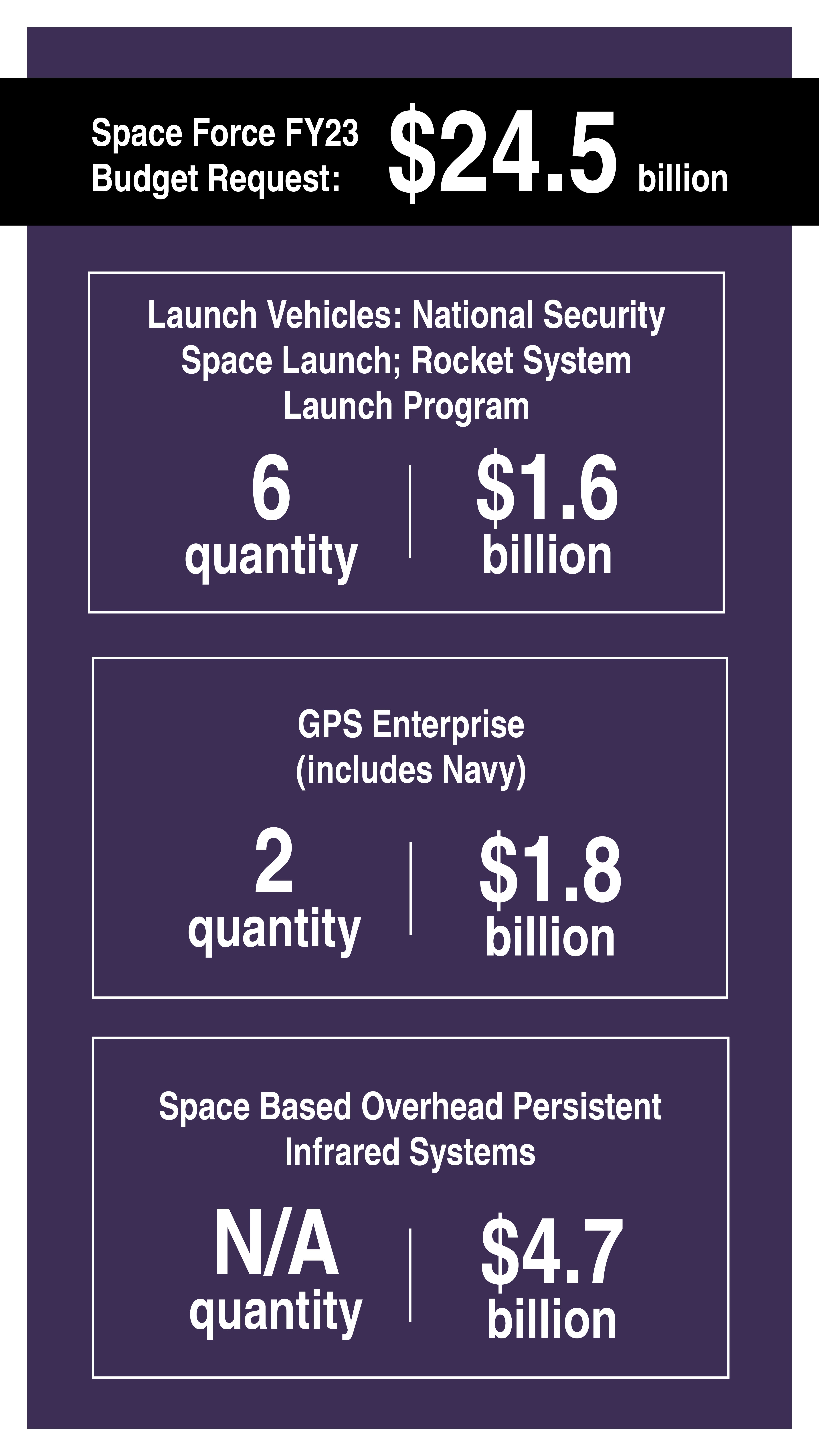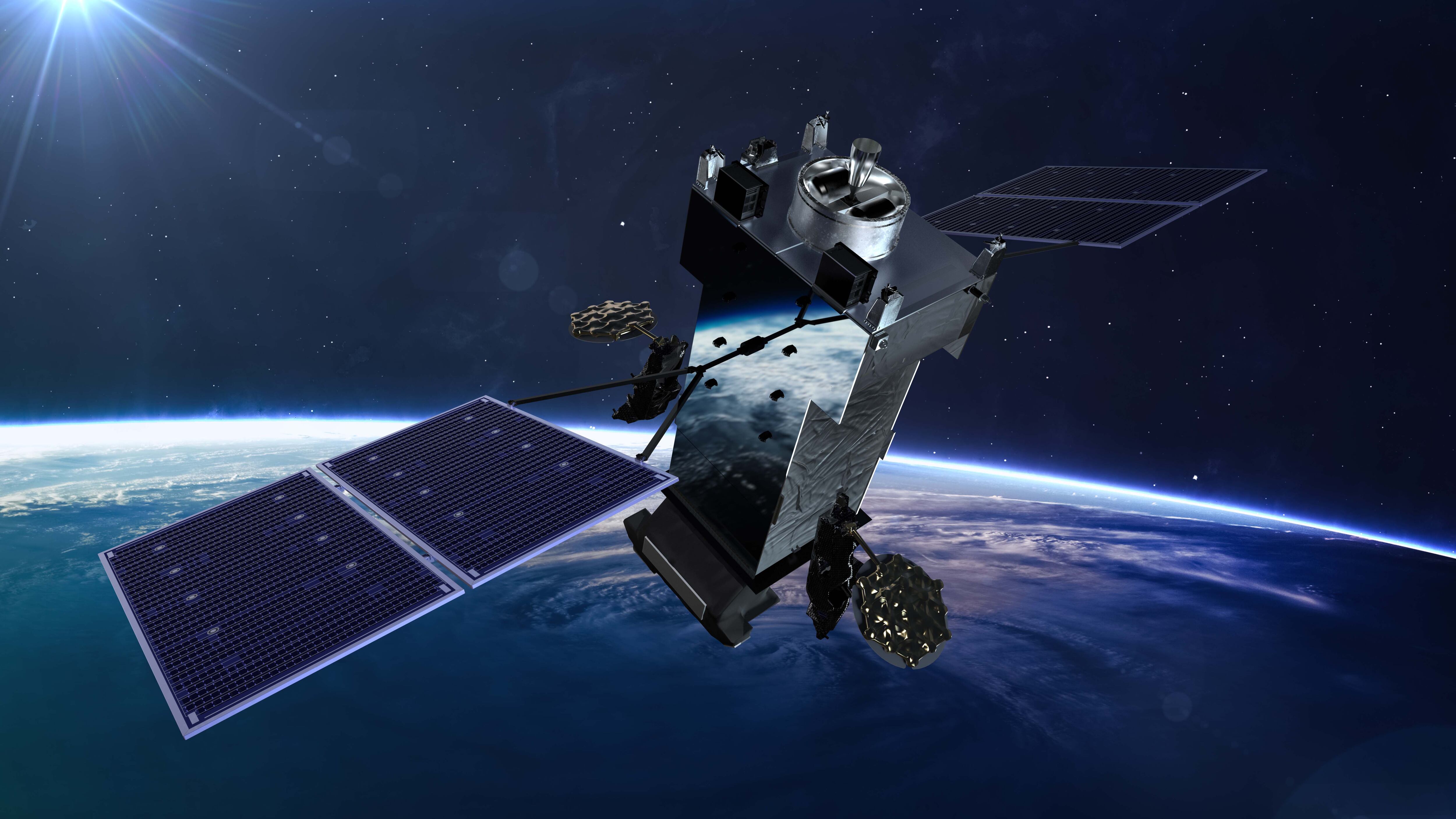WASHINGTON — The U.S. Space Force’s $24.5 billion funding request for fiscal 2023 represents a 40% increase over last year, driven by an urgency to build out the Department of Defense’s space-based missile warning and tracking architecture.
Air Force Secretary Frank Kendall told reporters during an embargoed media briefing March 25 that the Space Force’s $7 billion budget growth above the service’s $17.4 billion fiscal 2022 request represents a need to shift to more resilient space architectures. Much of the increase is focused on research and development, but it also includes additional transfers from the other services as well as the Space Development Agency, which will transition into the Space Force in October.
“The reason there is a Space Force, the reason the Obama administration changed its strategy for space, was because of the threat — the widespread investment that both China and Russia have in anti-space, counterspace capabilities, including things that threaten us and within all different orbital regimes,” Kendall said. “This is a move toward systems that can continue to provide the services we depend on.”

Kendall noted that while much of the Space Force’s fiscal 2023 budget request resides in its research and development portfolio, funding will shift toward procurement in the coming years as the service begins to field a new proliferated architecture. The service’s $15.8 billion research and development request is $4.5 billion higher than in fiscal 2022 and more than four times the fiscal 2023 request for procurement funding, which stands around $3.6 billion.
“When you see the ratios of R&D to procurement costs that you’re seeing in our budgets right now, it’s like a red flag that tells you that the procurement costs that are going to be required to buy the things you have in R&D are going to go up,” he said. “So, we’re doing the R&D and that’s a down payment on future capability, but there’s a necessity — if we’re going to be able to effectively deter and project power the way we need to be able to do that — to move that R&D money and get into procurement and put real quantities of actual equipment in the hands of our operators.”
Kendall said he has directed the Air Force and Space Force acquisition offices to structure programs in order to field “meaningful” capability as quickly as possible.
“For that reason, I think there are going to be some very hard choices as we go through the R&D and define exactly what we’re going to buy in order to get into a procurement mode instead of an R&D mode,” he said.
The Space Warfighting Analysis Center has led the force design efforts that will support major architecture shifts for the Space Force, and its early efforts have focused on the Department of Defense’s missile warning and tracking systems. Informed by that work, the service’s budget request proposes $4.7 billion for the satellites, sensors and ground systems that will make up that architecture.
That includes a $1 billion increase for the Next-Generation Overhead Persistent Infrared System, which is developing missile tracking satellites that will be based in geosynchronous and Polar orbits as well as a new ground segment that will fuse data from missile warning sensors. The service’s fiscal 2022 budget included $2.45 billion across the program’s three segments.
DoD has not yet released its detailed budget justification documents, so it’s not immediately clear how the $1 billion is distributed, but spokeswoman Capt. Samantha Morrison told C4ISRNET the increase includes $576 million in additional funding for the GEO segment and $238 million for Polar, with the remaining $186 million likely supporting the ground segment.
The budget request also proposes $1 billion for what appears to be a new initiative called Resilient Missile Warning and Tracking, which Kendall said would fund development of the service’s long-term architecture. He didn’t offer much detail on the effort but said it would be part of a “proliferated, multi-orbit, disaggregated architecture” that is more resilient to attack. The early development funding, if approved, will put the service on a track to begin initial procurement of that architecture in the next five years, Kendall noted.
Morrison said the other piece of the department’s space-based missile defense architecture, the Space Development Agency’s Tracking Layer, is included as part of the Resilient Missile Warning and Missile Tracking funding line. She did not offer details on specific funding levels for SDA’s missile tracking capabilities, saying “the entire portfolio is currently under review to determine how best to use the resources.”
Elsewhere in the budget, the service requests $1.6 billion to procure six Space Force and SDA launches and proposes a $406 million increase for the Evolved Strategic Satellite Communications program — significant growth over last year’s $160 million request. ESS will succeed the Advanced Extremely High Frequency Satellite program to provide secure, survivable and anti-jam communications.
The request also adds $108 million for the Deep Space Advanced Radar Capability, a rapid acquisition program that will provide all-weather space domain awareness in GEO. Fiscal 2023 funding, if approved, would support the standup of the first DARC site as well as prototyping for the radar. The Space Force in February awarded Northrop a $341 million Other Transaction Agreement for the program’s first increment.
Courtney Albon is C4ISRNET’s space and emerging technology reporter. She has covered the U.S. military since 2012, with a focus on the Air Force and Space Force. She has reported on some of the Defense Department’s most significant acquisition, budget and policy challenges.




